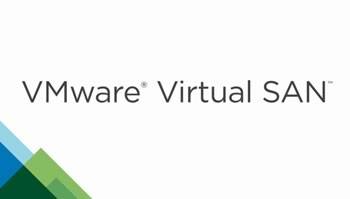Introduction to 2-Node vSAN Cluster
The vSAN 2 Node configuration initially introduced in vSAN 6.1. Prior to 2-node vSAN, three-node clusters was the minimum supported configuration for vSAN enabled environments. VMware vSAN 2 Node Clusters are supported on both Hybrid configurations and All-Flash configurations. A 2-node cluster is very useful in case of ROBO (Remote office Branch office). You don’t need a NAS or SAN for the shared storage. Each node is configured as a vSAN Fault Domain. The supported configuration is 1+1+1 (2 nodes + vSAN Witness Host). As we know vSAN is something like a RAID over the network. Normally vSAN supports RAID 1 and RAID 5 but once deployed in a 2 – node cluster on RAID 1 is available. When a VM Objects are created and stored in vSAN, the data is written on disk drives of both nodes. So, two components will be created: the original data and the replica.
vSAN Two-Node Architecture
The two-node vSAN architecture builds on the concept of Fault Domains where each of the two VMware ESXi™ hosts, represent a single Fault Domain. In vSAN architecture, the objects that make up a virtual machine are typically stored in a redundant mirror across two Fault Domains, assuming the Number of Failures to Tolerate is equal to 1. As a result of this, in a scenario where one of the hosts goes offline, the virtual machines can continue to run, or be restarted, on the alternate node. To achieve this, a Witness is required to act as a tie-breaker, to achieve a quorum, and enable the surviving nodes in the cluster to restart the affected virtual machines. However, unlike a traditional vSAN enabled cluster, where the witness objects are local to the configured cluster hosts, in a two-node architecture, the witness objects are located externally at a second site on a dedicated virtual appliance specifically configured to store metadata, and to provide the required quorum services for a host failure.
vSAN Witness Appliance Licensing
VMware introduced the vSAN Witness Appliance as a free alternative to using a physical ESXi host as a vSAN Witness Host. This appliance is only used for housing vSAN Object Witness Components, and is not allowed to run any virtual machine workloads.
Networking and Latency Requirements
VMware recommends that vSAN communication between the vSAN Data nodes be over L2. The communication between the Data Node and Witness Appliance can be of Layer – 2 (if Witness host is in the same site) or L3 (if Witness host is in an alternate Site). If Witness Appliance is located in an alternate site the supported latency between the Data Noes & Witness Appliance is 500 ms (250 ms one way)
Deploying 2-Node VSAN Cluster
Hope this will be informative for you. Please share if you find worth sharing it!!!.
